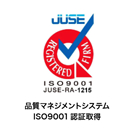Integrated payments help Vintti customers streamline the entire expense management lifecycle – from report creation through reimbursement. This saves significant time while improving employee satisfaction. In this post, we’ll review Zoho Expense, a leading web-based expense management software, to see how it can make managing expenses easier and more effective for your business. Historically, expense reporting has been a manual process predominantly. But, with amazing automation features from Zoho Expense, you don’t have to carry out mundane expense reporting tasks anymore.
Manage your expense reporting process easier with Zoho Expense’s convenient features and automation tools.
The system will freeze a fare while awaiting approval to avoid price surges and notify employees of price alerts so they can re-book at a lower fare. The system also automates visa requests and travel policy compliance. As employees make purchases with corporate cards, the line-item expenses are fed into Vintti to pre-populate expense reports. This makes report creation easier while ensuring accuracy of transaction data.
Key Integration Capabilities
If you’re worried about the safety of using third-party channels to import corporate card feeds into Zoho Expense, we’re here to reassure you. With Direct Feed Integration (DFI), you can fetch corporate card feeds directly from Visa, Mastercard, and Amex (American Express), eliminating the need for a middleman. Create budgets for expense categories or types, compare them with actual spending, and stay on top of your spending. Tailoring automated policies and approval workflows to match travel policies streamlines compliance.
Auto-generate expense report name and number
Auto-scan receipts, track and store them digitally, and forward them from your email. We’ve received your job requirements, and our team is working hard to find the perfect candidate for you. If you have more job openings available, feel free to submit another job description, and we’ll be happy to assist you. Automation and integration dramatically speeds up payment times over spreadsheet and paper-based systems.
Enhance expense reporting experience for your employees.
- FreshBooks is a great choice for businesses that are looking for an accounting software that includes expense tracking but don’t want to spend as much money as QuickBooks requires.
- QuickBooks also incorporates everything into one platform, while Zoho breaks out functions into separate products like Zoho Expense, Zoho Books and Zoho Invoice.
- Set up simple or hierarchical approvals and out-of-office approvers to ensure no expense report or travel request is left unattended.
- Enable different kinds of expenses—multicurrency, per diem, billable and non-billable—and automate expense creation.
- Moreover, Zoho Expense has the capability to export their information in far more detailed fashions than other desktop and mobile applications including AMEX and Citi.
Zoho Expense makes good use of this integration, so in some ways you get more than you pay for. If you connect it with Zoho CRM, for example, then sales teams can accumulate expenses tied to customers, making it easy to submit by customer or on a project basis. Configure multi-level, custom approval flows based on your own criteria https://financeinquirer.com/navigating-financial-growth-leveraging-bookkeeping-and-accounting-services-for-startups/ and ensure that expense reports and travel requests are routed to the appropriate person. FreshBooks is a more affordable alternative to QuickBooks that includes unlimited expense tracking on its base plan, which starts at $17 a month. FreshBooks also includes other accounting and invoicing features for an all-in-one platform.
Accounting Software Integration
You can connect corporate, prepaid or personal credit cards to Zoho Expense, so purchases will automatically be logged in the system, making it easy to reconcile business expenses. Set up limit rules based on fixed amounts, expense count, mileage limit and more. Choose to warn or entirely block employees from submitting expense reports when a rule is broken. Set up daily, monthly, or yearly expense limits, or place a rule for a custom duration as well. By integrating corporate card programs, employees can drastically reduce time spent on expense reports while improving compliance and visibility.
Expense management
Create expense reports with detailed information and submit for approval. This eliminates manual routing of expense reports and ensures the right approvers review each expenditure. accounting services for startups Beyond Zoho’s own software, Zoho Expense connects with Intuit QuickBooks for accounting, so you can schedule reimbursements in the usual accounting cycles.
- QuickBook is the industry standard in accounting software, and it offers receipt capture and expense management for all pricing tiers, which start at $30 a month.
- Design multiple complex approval flows and ensure that all transactions are overseen by the proper set of people before being approved.
- In addition to the Zoho applications, Zoho Expense also integrates with productivity suites like Google G Suite and Microsoft Office 365.
- Zoho Expense is also a great choice for small businesses looking for an affordable standalone expense management tool.
- Set up limit rules based on fixed amounts, expense count, mileage limit and more.
- It’s an end-to-end solution for streamlining business travel and expense processes.
Unlock the Talent Your Business Deserves
By integrating with payments platforms, Zoho Expense enables faster reimbursements to employees compared to manual checks or transfers. Zoho Expense’s mobile app is available for Android, iPhone, iPad, and Apple Watch. Create and customize user roles and provide or restrict access to employees. Enable different kinds of expenses—multicurrency, per diem, billable and non-billable—and automate expense creation.













